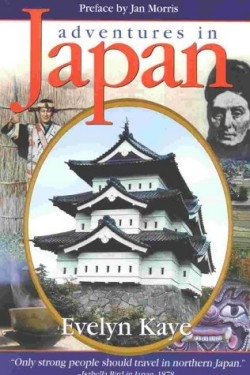Adventures in Japan
A Literary Journey in the Footsteps of a Victorian Lady
For her first visit to Japan nearly two years ago, this Colorado author chose to follow the route taken by Isabella Lucy Bird, well-known nineteenth century British adventure writer.
It seemed only fitting. Kaye, who first became acquainted with Bird when she discovered the author’s 1873 book, A Lady’s Life in the Rocky Mountains, delved into this intriguing subject further and came up with a biography on the Victorian adventurer.
Bird (1831-1904) was a stubbornly independent woman who refused to be held to the social constraints of the time. So after the death of her parents and on the pretext of needing to travel for “health reasons”—the only socially acceptable explanation for a woman traveling then (and solo, at that)—she embarked on a series of trips that eventually took her to China, Korea, Hawaii, and the mid-section of America. As Kaye writes in her introduction: “Bird was one of those feisty Victorian lady travelers who went everywhere years before women went anywhere.”
Bird wrote Unbeaten Tracks in Japan after she traveled there in 1878, just twenty-five years after the country was opened to foreigners following 200 years of self-imposed isolation. She chose to explore the northernmost island of Hokkaido, home to the Ainu, believed to be descendants of the country’s original inhabitants.
In fourteen chapters, Kaye intertwines excerpts from Bird’s book and her own observations on the same things—the people, the countryside, the towns, the architecture, the transportation, the food, the sites—exactly 120 years later.
She offers historical background information on the shrines, customs, natural parks, and the nearly thirty-four mile long train tunnel (fourteen and a half miles of that 787 feet under the sea) that connects Hokkaido to the lower island, Honshu.
Bird took the only route available then—a ferry, which usually took a few hours to cover the sixty miles. Riding in fast trains and cars, Kaye—also alone except for occasional guides—covered the same ground as Bird, but it only took her three weeks. The Victorian lady was there several months.
Kaye, author of nineteen other books, including several on traveling and vacationing, moved around in relative comfort. In Yamagata, she experienced the hot springs bathroom. “There was a wonderful sense of freedom, to be naked, clean and completely alone in the hot bath, somewhere in Japan.”
Reviewed by
Robin Farrell Edmunds
Disclosure: This article is not an endorsement, but a review. The publisher of this book provided free copies of the book to have their book reviewed by a professional reviewer. No fee was paid by the publisher for this review. Foreword Reviews only recommends books that we love. Foreword Magazine, Inc. is disclosing this in accordance with the Federal Trade Commission’s 16 CFR, Part 255.

